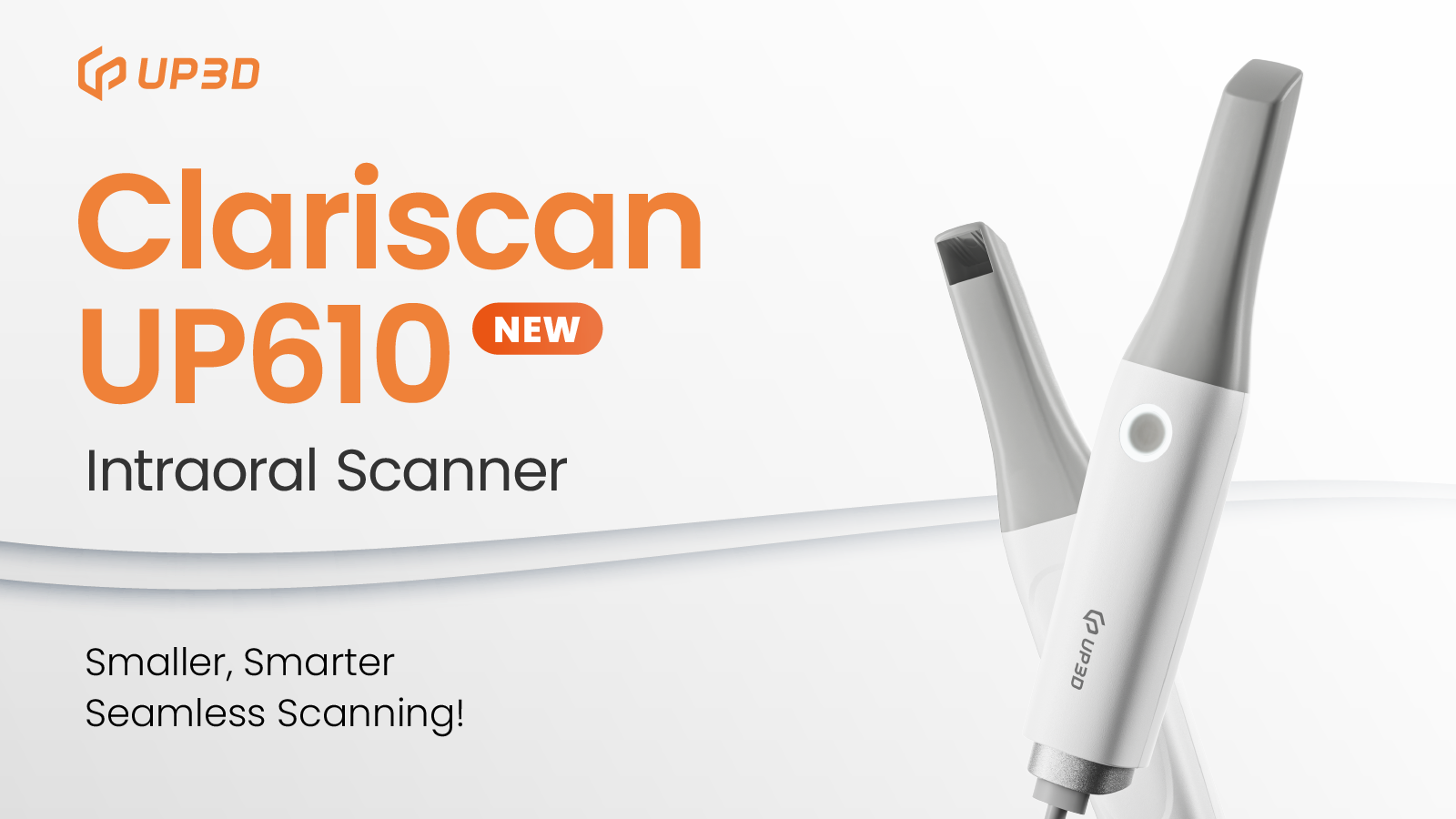The shift to digital dentistry is more than a trend—it’s the future. With intraoral scanners replacing traditional impressions, choosing the right scanner can enhance efficiency, improve accuracy, and streamline your workflow.
But with so many options available, what should you look for? Whether you’re in a dental clinic or a lab, understanding key factors like scanning speed, AI-powered automation, and CAD/CAM compatibility will help you make an informed decision.
Let’s dive into the essential considerations when selecting an intraoral scanner and see how innovations like the UP610 intraoral scanner are redefining digital workflows.
Key Factors to Consider When Selecting an Intraoral Scanner
Scanning Speed & Workflow Efficiency: Why It Matters
Speed isn’t just about scanning faster—it’s about improving the entire clinical and lab workflow. A high-speed intraoral scanner can reduce patient chair time, increase daily productivity, and minimize manual corrections.
✔ Full-arch scan time – The fastest scanners complete a full arch in under 60 seconds.
✔ Frame rate (FPS) – Higher FPS ensures smoother motion capture and better scan accuracy.
✔ AI-powered real-time processing – Reduces errors and eliminates the need for manual adjustments.

The UP610 intraoral scanner enhances workflow with fast, AI-assisted scanning, making case turnaround faster and more efficient.
Accuracy & Depth of Field: Precision That Matters
Intraoral scanners must deliver consistent, repeatable accuracy—especially for implant restorations, full-arch cases, and orthodontics.
Key considerations:
✔ System accuracy – A sub-micron precision scanner ensures that digital impressions match the real anatomy.
✔ Extended depth of field (DOF) – The UP610 scanner offers a 22mm ultra-deep DOF, making it easier to scan deep palates, angled implant abutments, and challenging anatomical structures.
✔ Consistent data capture – Ensures stable results across multiple scans, reducing case errors.
With AI-assisted scan correction and enhanced optical precision, scanners like the UP610 reduce common scanning issues, ensuring reliable data collection.
AI-Powered Automation: A Smarter Scanning Experience
Artificial intelligence is transforming digital impressions—making scanning more intuitive and reducing technician workload.
✔ Automatic jaw switching – Detects upper and lower arches automatically, preventing misalignment.
✔ AI-guided occlusion capture – Ensures precise bite registration, eliminating occlusal discrepancies.
✔ Automated soft tissue removal – Removes unnecessary scan data, providing a cleaner, more refined 3D model.
With advanced AI-driven scanning, the UP610 scanner minimizes human error, making digital impressions faster and more predictable.
Open System Compatibility: Ensuring Seamless Integration
No scanner exists in isolation—it must integrate with CAD/CAM software, 3D printers, and milling systems.
When evaluating compatibility, ask:
✔ Does it support open file formats (STL, PLY, OBJ)?
✔ Can it seamlessly integrate with exocad and other CAD platforms?
✔ Does it offer cloud-based collaboration for real-time data sharing?
The UP610 intraoral scanner ensures full CAD/CAM compatibility, making it easy to integrate with existing workflows.
2. Choosing the Right Scanner for Your Practice
For Dental Clinics: Faster Workflows, Better Patient Experience
Clinicians need a scanner that prioritizes speed, ease of use, and accuracy.
✔ AI-enhanced scanning speeds up chairside workflows.
✔ Fast, high-precision scans ensure accurate restorations.
✔ Shorter scan times improve patient comfort and satisfaction.
For Dental Labs: Precision & Workflow Automation
Labs require scanners that emphasize precision, automation, and seamless CAD integration.
✔ Sub-micron accuracy ensures consistent results for complex restorations.
✔ Advanced AI tools optimize scan data, reducing manual adjustments.
✔ High-speed processing handles bulk cases efficiently.
By ensuring scalable, precise workflows, the right scanner maximizes productivity while maintaining top-tier accuracy.
3. Making the Right Investment in Digital Dentistry
Selecting the right intraoral scanner is about enhancing workflow, improving efficiency, and future-proofing your digital dentistry capabilities.
Key Takeaways:
✔ Speed & AI automation – Reduces chair time and boosts productivity.
✔ Precision & depth of field – Ensures reliable results across case types.
✔ Seamless CAD/CAM integration – Supports flexible, future-proof workflows.
With its AI-driven scanning, ultra-deep field precision, and real-time workflow optimization, the UP610 intraoral scanner meets the demands of modern digital dentistry.
Final Thoughts
With intraoral scanning technology advancing rapidly, choosing the right scanner can transform your practice’s digital capabilities.
Looking for a high-speed, AI-powered intraoral scanner?
Discover how the UP610 intraoral scanner can optimize your workflow and improve patient care.








